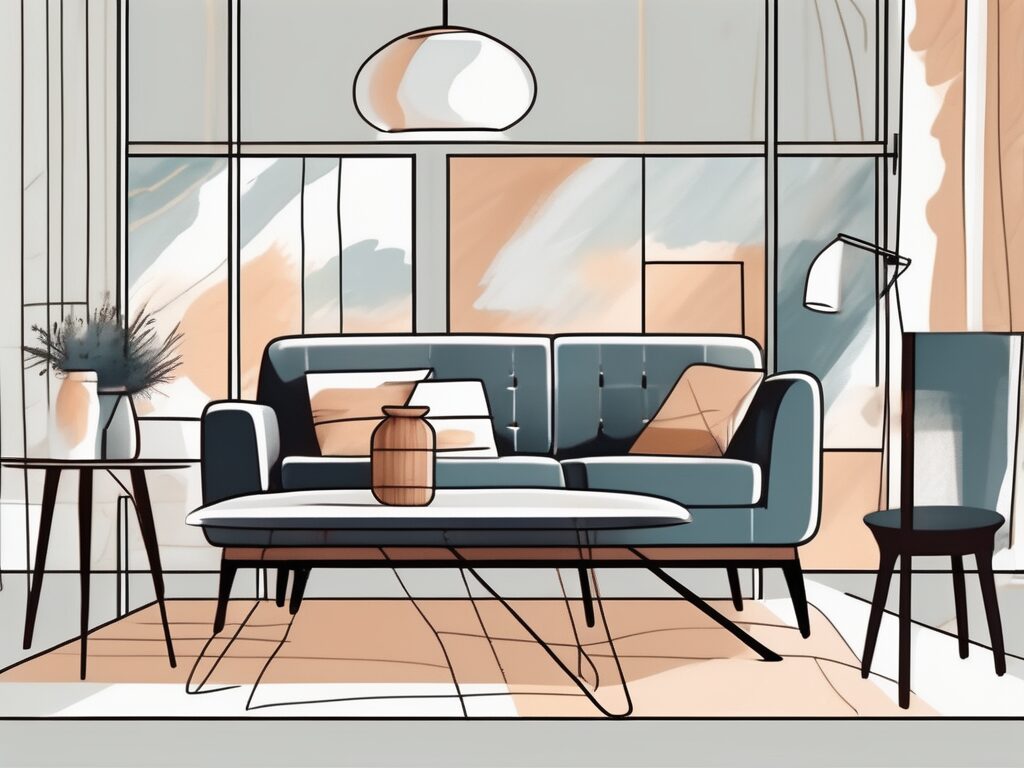
Agent A-Team or Solo Superhero? Finding the Right Real Estate Partner for Your Selling Journey in Wildwood Florida
When it comes to selling your home in Wildwood, Florida,…
January 29, 2024
If you’re preparing to sell your house, it’s important to consider how to price your furniture. The right strategy can help you maximize the value of your furniture and ultimately increase your chances of a successful sale. In this article, we’ll explore four expert tips to help you navigate this process and make informed decisions. From assessing the value of your furniture to strategizing the logistics of selling it, we’ve got you covered. Let’s get started!
Before you set a price for your furniture, it’s crucial to assess its value accurately. Start by evaluating the condition of each piece. Consider any wear and tear, damage, or necessary repairs. Keep in mind that buyers will be looking for furniture in good condition, so maintaining or fixing it beforehand can increase its value.
When assessing the condition of your furniture, pay attention to the overall structure and functionality. Are there any loose joints or wobbly legs? Check for any stains, scratches, or dents on the surface. Take note of any missing or damaged hardware, such as handles or knobs. These details will help you determine the level of restoration required and the impact it may have on the value.
Next, research the current market value of similar furniture items. Check online platforms, furniture stores, and local advertisements to get an idea of what buyers are willing to pay. Keep in mind that factors such as brand, material, and design can also influence the value of your furniture. Take note of any unique or desirable features that could set it apart from the competition.
Consider the brand reputation when researching the market value. Certain brands are known for their quality craftsmanship and durability, which can drive up the price. Additionally, furniture made from high-quality materials such as solid wood or genuine leather tends to hold more value compared to pieces made from particleboard or faux leather.
Furthermore, the design of your furniture can greatly impact its value. Vintage or antique pieces often have a higher market value due to their historical significance and unique aesthetic appeal. On the other hand, contemporary designs with sleek lines and modern finishes may attract buyers who prefer a more minimalist style.
Lastly, consider consulting an appraiser or furniture expert to get a professional opinion on the value of your furniture. Their expertise can provide valuable insights and help you establish a fair and realistic price range. Appraisers have in-depth knowledge of furniture history, market trends, and can identify any rare or valuable characteristics that may increase the value of your furniture.
When consulting an appraiser, be prepared to provide detailed information about your furniture, including its age, origin, and any relevant documentation or provenance. This information will assist the appraiser in conducting a thorough evaluation and providing an accurate assessment of its value.
Remember, accurately assessing the value of your furniture is essential for a successful sale. Taking the time to evaluate its condition, researching the market, and seeking professional advice will help you set a fair price that attracts potential buyers and maximizes your return on investment.
When it comes to selling your furniture, presentation is key. Potential buyers want to envision themselves living in your house, so staging your furniture properly can make a significant difference in their perception of the space.
Start by decluttering and removing any personal items or excessive decor. This can help potential buyers imagine their own belongings in the house. Clearing out unnecessary items also creates a sense of spaciousness, making the rooms feel larger and more inviting.
Once you have decluttered, it’s time to arrange your furniture in a way that highlights its functionality and showcases the potential of each room. Consider the flow of the space and create distinct areas for relaxation, dining, and productive work. For example, in the living room, position the sofa and chairs in a conversational arrangement, with a coffee table in the center. Add some decorative pillows and a cozy throw blanket to create a welcoming atmosphere.
In the dining area, set the table with a simple centerpiece and place settings to create an inviting space for entertaining. If you have a home office, organize the desk and surrounding area to showcase its functionality, with a comfortable chair and adequate lighting.
While staging your furniture, it’s important to pay attention to details. Consider making minor updates or improvements to enhance the appeal of your furniture. For example, reupholstering worn-out chairs can give them a fresh and modern look. Adding a fresh coat of paint to a dresser can breathe new life into older pieces. These small investments can yield a higher sale price and attract more buyers.
Another way to maximize the value of your furniture is to highlight its versatility. Show potential buyers how certain pieces can be used in different rooms or configurations. For example, if you have a modular sofa, demonstrate how it can be rearranged to fit different living room layouts. If you have a multipurpose table, showcase its versatility by using it as a desk, dining table, or even a craft station.
Additionally, consider accessorizing your furniture to create a visually appealing and cohesive look. Add some decorative items, such as vases, artwork, or plants, to bring life and personality to the space. Choose pieces that complement the style and color scheme of your furniture, creating a harmonious and inviting atmosphere.
Lastly, don’t forget about the power of natural light. Open up curtains or blinds to let in as much natural light as possible. Natural light can make a space feel brighter, more spacious, and more inviting. If you have any furniture near windows, make sure it is arranged in a way that takes advantage of the natural light.
In conclusion, when selling your furniture, it’s important to stage it properly to maximize its value. Declutter, arrange your furniture to showcase its functionality, make minor updates or improvements, highlight versatility, accessorize, and take advantage of natural light. By following these tips, you can create an appealing and inviting space that potential buyers will love.
When it comes to selling your furniture, there are three main options to consider: bundling furniture with the property sale, negotiating furniture as a sales concession, or selling furniture separately from the home. Let’s explore each option:
One option is to include the furniture as part of the property sale. This can be appealing to buyers who are looking for a furnished home, as it offers convenience and saves them the hassle of purchasing furniture separately. Imagine the excitement of potential buyers as they walk into a fully furnished living room, complete with a cozy sofa, elegant coffee table, and stylish decor. The thought of not having to worry about furnishing their new home can be a major selling point.
If you choose this option, it’s essential to factor the value of the furniture into the overall sale price. You wouldn’t want to undervalue your furniture and end up losing money. On the other hand, overpricing it may deter potential buyers. Consider conducting market research to determine how this inclusion may impact your asking price. By understanding the market demand and the value of your furniture, you can strike the right balance and ensure a fair deal for both parties involved.
Another approach is to negotiate the furniture as a sales concession. This means that instead of including the furniture in the sale, you offer it as a separate negotiation point. This option allows you to maintain control over the furniture’s value and separate it from the property transaction. It can be particularly beneficial if you have high-value or unique furniture pieces that may not align with the taste or needs of potential buyers.
By negotiating the furniture separately, you open up the possibility of attracting buyers who are solely interested in the property itself. These buyers may be willing to offer a higher price for the property, knowing that they won’t have to pay for furniture they don’t want or need. It’s important to highlight the quality and value of your furniture during negotiations, emphasizing how it can enhance the buyer’s living experience without inflating the property’s price.
The third option is to sell the furniture separately from the home. This option can be appealing if you believe your furniture holds significant value or if you prefer to start fresh in your new home. Selling furniture separately allows you to focus solely on the property sale and not be burdened with the additional task of finding buyers for your furniture.
When selling furniture separately, you have various avenues to explore. You can advertise the furniture online on platforms dedicated to buying and selling used items, reaching a wide audience of potential buyers. Hosting a garage sale can also be an effective way to attract local buyers who are specifically looking for furniture. Additionally, you can consider working with consignment or furniture resale shops, which can help you find interested buyers and handle the logistics of the sale.
Ensure you set realistic prices based on market value and be prepared for negotiations with potential buyers. Just like selling a property, selling furniture requires effective marketing, clear communication, and the ability to showcase the value and appeal of each piece. Take high-quality photos, write detailed descriptions, and be responsive to inquiries to maximize your chances of selling your furniture at a fair price.
As with any decision, it’s essential to consider the pros and cons of selling your furniture. On the one hand, selling your furniture along with the house can make the overall offer more attractive to certain buyers and simplify the moving process. Having a fully furnished house can give potential buyers a better idea of how the space can be utilized and may increase the chances of a quick sale.
On the other hand, separating the furniture sale from the house sale can provide you with more control over pricing and potentially yield higher profits. By selling your furniture separately, you can negotiate individual prices for each item and maximize your returns. This approach allows you to showcase the value of your furniture and appeal to buyers who may not be interested in purchasing a fully furnished house.
Additionally, if you plan on purchasing new furniture for your new home, selling your existing furniture can save you money on moving and storage costs. Instead of paying to transport and store furniture that you no longer need or want, selling it can help offset the expenses of buying new furniture. This can be particularly beneficial if you are downsizing or moving long distances.
However, it’s important to consider the sentimental value attached to your furniture. Some pieces may hold special memories or have been passed down through generations, making it difficult to part with them. In such cases, you may choose to keep certain sentimental items and only sell the furniture that you are willing to let go of.
Ultimately, the decision to sell your furniture should align with your goals, preferences, and timeline. If you are looking for a quick and hassle-free sale, selling your furniture along with the house could be the best option. On the other hand, if you are willing to invest more time and effort into the selling process, selling your furniture separately may yield higher profits. Consider your financial situation, future plans, and emotional attachment to make an informed decision.
Selling a furnished home involves careful planning and strategic decision-making. By following the expert tips we’ve outlined in this article, you’ll be well-equipped to navigate the process with confidence. Remember to assess the value of your furniture accurately, maximize its appeal through staging, and strategize the logistics of selling it. Consider the three options available to you and weigh the pros and cons to make an informed decision.
When it comes to assessing the value of your furniture, it’s important to take into account factors such as age, condition, and market demand. Conducting research on similar furniture items in your area can give you a better understanding of their market value. Additionally, consider consulting with a professional appraiser who specializes in furniture valuation. Their expertise can provide you with an accurate estimate of your furniture’s worth.
Once you have determined the value of your furniture, it’s time to maximize its appeal through staging. Staging involves arranging your furniture in a way that showcases its best features and creates an inviting atmosphere for potential buyers. Consider decluttering and rearranging the furniture to create an open and spacious feel. Add some decorative elements such as fresh flowers or artwork to enhance the overall aesthetic appeal.
When strategizing the logistics of selling your furniture, it’s essential to consider the three options available to you: selling the furniture along with the home, selling it separately, or storing it. Each option has its own advantages and disadvantages. Selling the furniture along with the home can attract buyers who are looking for a fully furnished property, but it may limit your potential buyer pool. Selling the furniture separately allows you to reach a wider audience, but it requires additional effort in terms of marketing and logistics. Finally, storing the furniture can be a viable option if you plan to use it in your new home or if you anticipate selling it at a later time.
Remember, each home and its accompanying furniture is unique, so there’s no one-size-fits-all approach. Trust your instincts and consider seeking advice from real estate professionals or staging experts who can offer valuable insights specific to your situation. They can provide guidance on pricing your furniture effectively and attracting the right buyers. Additionally, they can assist you in creating a comprehensive marketing strategy to showcase your furnished home in the best possible light.
With the right approach, you’ll be able to increase your chances of a successful home sale. By accurately assessing the value of your furniture, maximizing its appeal through staging, and strategizing the logistics of selling it, you’ll be well-prepared to embark on this exciting journey. Remember to stay organized, stay informed, and stay positive throughout the process. Selling a furnished home can be a rewarding experience, and with the right mindset and preparation, you’ll be able to achieve your desired outcome. Good luck!

If you want the Richr team to help you save thousands on your home just book a call.
 Book a call
Book a call